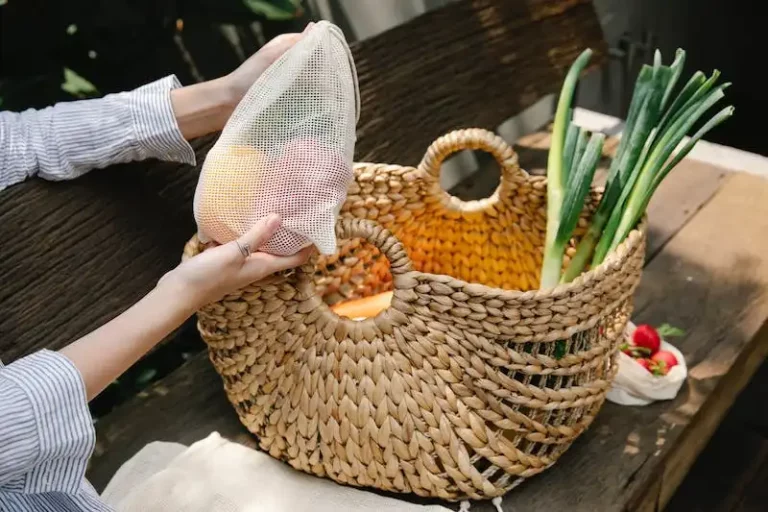Planting anemone bulbs is a great way to add vibrant colors to your garden. Anemones, particularly the Caen and Coronaria varieties, are known for their beautiful flowers and delicate foliage. With the right care and maintenance, you can enjoy these stunning flowers year after year.
When it comes to planting anemone bulbs, timing is key. These bulbs should be planted in autumn, before the first frost, so they have time to establish their roots before winter. The bulbs should be soaked in water for a few hours before planting to rehydrate them and prep them for growth.
Choose a location in your garden that receives full sun or partial shade. Anemones prefer well-draining soils, so make sure to mix in some sand or perlite if your soil is heavy. Dig a hole that is about 2 inches deep and place the bulb in, pointed side up. Space the bulbs about 4-6 inches apart to allow room for growth.
Once planted, water the bulbs thoroughly and watch as the foliage starts to emerge in a few weeks. The foliage will continue to grow throughout the winter and into spring. Care and maintenance for anemones is relatively easy. Keep the soil evenly moist, but not waterlogged, during the growing season. Mulching around the plants can help retain moisture and keep the roots cool during the summer months.
Anemones are versatile plants that can be grown in containers, flower beds, or even used for cut flowers in bouquets. With their wide range of colors and forms, anemones are sure to add a touch of elegance to any garden. So wait no more, plant your anemone bulbs this autumn and get ready to enjoy their beauty!
In summary, here are the key steps for planting anemone bulbs:
- Soak the bulbs in water before planting.
- Choose a location with full sun or partial shade and well-draining soil.
- Dig a hole 2 inches deep and place the bulb in, pointed side up.
- Space the bulbs 4-6 inches apart.
- Water thoroughly after planting and keep the soil evenly moist during the growing season.
- Enjoy the beautiful foliage and wait for the flowers to bloom in spring.
How to plant anemones Coronaria De Caen and St Brigid
Planting anemones Coronaria De Caen and St Brigid requires proper care and attention to ensure successful growth. Here are step-by-step instructions on how to plant these beautiful flowers:
| Step | Description |
|---|---|
| 1 | Choose a location in your garden that receives full sun or partial shade. |
| 2 | Prepare the soil by removing any weeds or large clumps of dirt. Anemones prefer well-draining soils, so it’s important to mix in some compost or sand to improve drainage. |
| 3 | Soak the anemone bulbs in water for a few hours before planting. This will help hydrate the corms and prepare them for planting. |
| 4 | Dig small holes in the prepared soil, spacing them about 2-3 inches apart. The holes should be deep enough to accommodate the bulbs. |
| 5 | Place each bulb into a hole, with the pointed end facing up. Cover the bulbs with soil and gently press down to secure them in place. |
| 6 | Water the newly planted bulbs thoroughly, making sure the soil is evenly moist. Be careful not to overwater, as excessive moisture can lead to rotting. |
| 7 | Keep the area well-watered throughout the summer, especially during dry periods. Anemones need regular watering to support their foliage growth. |
| 8 | Leave the foliage intact until it naturally dies back in late summer or early autumn. This allows the bulbs to store energy for the next growing season. |
| 9 | During winter, provide some protection for the bulbs by covering the area with a layer of mulch. This helps to insulate them from extreme temperature fluctuations. |
In summary, planting anemones Coronaria De Caen and St Brigid involves choosing a suitable location, preparing the soil, soaking the bulbs, digging holes, planting the bulbs, watering regularly, leaving the foliage to die back, and providing winter protection. By following these tips and care instructions, you can enjoy beautiful anemone flowers in your garden year after year, with a variety of colours to brighten up your spring bouquets.
Planting anemone bulbs – Instructions and Summary
Planting anemone bulbs is a simple process that can result in beautiful blooms. Anemone bulbs, particularly those of the Anemone coronaria form, are easy to care for and can be grown in a variety of soils, making them a popular choice for many gardeners.
Step 1: Preparation
Before planting anemone bulbs, it is important to prepare the soil. Anemones prefer a well-drained soil, so make sure to mix in some sand or gravel to improve the drainage. You can also soak the bulbs overnight to help stimulate growth.
Step 2: Planting
When planting anemone bulbs, choose a location in your garden that receives full sun to partial shade. Anemone bulbs should be planted about 1-2 inches deep and 4-6 inches apart. Make sure to space them apart to allow for good air circulation.
Step 3: Care and Maintenance
After planting, water the bulbs well and then keep the soil evenly moist. Anemone bulbs are fairly low maintenance and will usually flower in late spring to early summer. You can also leave the foliage to die back naturally, as this helps to nourish the bulbs for the following year.
Summary
In summary, planting anemone bulbs is a relatively easy process. Prepare the soil, soak the bulbs if desired, plant them in a sunny location, and water them regularly. With proper care and maintenance, your anemones will produce beautiful flowers year after year.
Location for planting Anemone bulbs
When it comes to planting anemone bulbs, choosing the right location is key. Anemone bulbs, also known as corms, prefer well-draining soils and a location that receives full sun or partial shade. They can be planted in containers or directly in the garden. Here is a summary of the instructions and tips for planting anemone bulbs:
1. Timing: Anemone bulbs are typically planted in the spring, after the threat of frost has passed. If you live in a colder zone, you can plant them in the fall for winter protection.
2. Soil preparation: Before planting, prepare the soil by removing any weeds or grass and loosening it with a garden fork or tiller. Anemones prefer well-draining soils, so you can mix in some compost or sand to improve drainage if necessary.
3. Planting depth: Plant the anemone bulbs about 1-2 inches deep, with the pointed end facing up. Space them about 5-6 inches apart to allow room for growth.
4. Watering: After planting, water the bulbs thoroughly to settle the soil and remove any air pockets. Anemones need regular watering during their growing season, but avoid overwatering, as this can cause bulb rot.
5. Foliage cutting: When the foliage starts to turn yellow and die back in late summer or early fall, you can cut it back to the ground. This will help the anemone bulbs store energy for the next year.
6. Maintenance: Anemone bulbs are generally low-maintenance plants. They will come back year after year if they are left undisturbed. However, if you need to move them or divide them, wait until the foliage has completely died back.
7. Flower colors: Anemone bulbs come in a variety of colors, including white, pink, purple, and red. You can choose single or double-flowered varieties to suit your preference.
8. Bouquets and arrangements: Anemone flowers make beautiful additions to bouquets and floral arrangements. Cut the stems just as the flowers are starting to open for the longest vase life.
By following these instructions and taking good care of your anemone bulbs, you can enjoy their beautiful flowers and foliage year after year. Plant them in a location where they will receive the right amount of sunlight and water, and they will reward you with stunning blooms in spring and summer.
When to plant anemone bulbs
Plant anemone bulbs in late summer or early autumn, ideally around August or September. This is the best time to plant them as the soil is still warm, which will encourage their growth. It’s important to wait until after the last frost of the year, as anemones do not tolerate cold temperatures.
Before planting, prepare the soil by removing any weeds and loosening it with a garden fork or tiller. Anemones prefer well-drained soil, so ensure that the area is not prone to waterlogging. If you have heavy clay soil, consider adding some sand or organic matter to improve drainage.
When planting anemone bulbs, choose a sunny location in your garden, as anemones thrive in full sun. Dig a hole that is around 1 inch deep and place the bulbs in the hole, pointed end up. Space the bulbs about 4-5 inches apart to allow enough room for them to grow.
After planting, cover the bulbs with soil and gently firm it down around them. Water the area well to settle the soil and provide moisture for the bulbs. Keep the soil evenly moist but not waterlogged during the growing season, from spring until the foliage starts to die back in late summer.
Anemones are generally low-maintenance plants and don’t require much care. However, it is a good idea to provide some support for their stems as they grow, especially if you are growing taller varieties. You can use stakes or a trellis to keep the stems upright and prevent them from flopping over. In addition, regular watering and occasional fertilizing can help promote healthy growth and abundant flowering.
Leave the foliage to die back naturally after flowering, as this will allow it to store energy in the bulbs for next year’s growth. If the foliage becomes unsightly, you can remove it once it has turned yellow or brown. In colder climates, it is a good practice to mulch the area around the plants in late autumn to protect them from winter frost.
In summary, anemone bulbs should be planted in late summer or early autumn, around August or September. Choose a sunny location with well-drained soil, and wait until after the last frost of the year. Plant the bulbs 1 inch deep, 4-5 inches apart, and keep the soil evenly moist during the growing season. Provide support for taller varieties and leave the foliage to die back naturally. Mulch the area in colder climates to protect the bulbs during winter.



